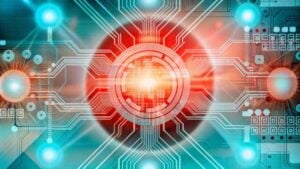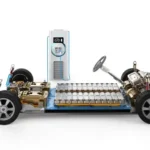Understanding the Key Characteristics of Computer Systems
In today’s rapidly evolving technological landscape, computer systems play a pivotal role. They drive innovation and efficiency across various sectors. Understanding the characteristics of a computer, along with the components of a computer system—such as the CPU, memory, and storage—is crucial for anyone looking to excel in this field. The demand for expertise in computer systems is growing significantly. For instance, employment for computer and information systems managers is projected to grow by 17% from 2023 to 2033. This growth underscores the importance of mastering these systems to stay competitive in the job market.
Components of a Computer System

Understanding the components of a computer system is crucial for anyone looking to harness its full potential. These components work together to perform tasks efficiently and effectively. Let’s explore the key elements that make up a computer system.
Central Processing Unit (CPU)
The Central Processing Unit (CPU) serves as the brain of your computer system. It processes data and executes instructions from software programs. The CPU’s role is vital in determining how quickly and efficiently your computer can perform tasks. Different types of CPUs are designed for various applications. For instance, the Tensor Streaming Processor (TSP) excels in machine learning tasks, while the AMD Ryzen Threadripper™ 3990X 64-Core processor is ideal for AI applications. If you’re into video editing, the Intel Core i7 14700KF 20-Core offers excellent performance. Gamers might prefer the Ryzen 9 7900X for its superior gaming capabilities.
Memory
Memory in a computer system is essential for storing data temporarily and permanently. You encounter two main types of memory: Random Access Memory (RAM) and Read-Only Memory (ROM). RAM provides quick access to data that the CPU needs immediately, enhancing the speed and efficiency of your computer. ROM, on the other hand, stores essential instructions for booting up the computer. The function of memory in a computer system is to ensure that data is readily available for processing, which is crucial for smooth operation.
Storage Devices
Storage devices are critical components of a computer system, responsible for retaining data and applications. You have access to two primary types of storage: primary storage and secondary storage. Primary storage, like RAM, offers fast access to data but is volatile, meaning it loses data when the computer is turned off. Secondary storage, such as hard disk drives (HDD) and solid-state drives (SSD), provides long-term data retention. SSDs are more energy-efficient and reliable than HDDs because they lack moving parts, leading to lower energy consumption and longer battery life. Understanding these storage options helps you make informed decisions about your data storage needs.
Input/Output (I/O) Devices
Input/Output (I/O) devices play a crucial role in how you interact with computer systems. These devices serve as the bridge between you and the computer, allowing for seamless communication and data exchange. Understanding the characteristics of a computer, including its I/O capabilities, enhances your ability to utilize these systems effectively.
Role of I/O Devices in User Interaction
I/O devices facilitate user interaction by enabling data input and output. When you type on a keyboard or click with a mouse, you are using input devices to communicate commands to the computer. The computer processes these inputs through its components, such as the CPU and memory, and then provides feedback via output devices like monitors and printers. This interaction is fundamental to the operation of computer systems, allowing you to perform tasks ranging from simple document editing to complex data analysis.
The components of a computer system, including I/O devices, work together to ensure efficient data processing and user interaction. For instance, when you use a touchscreen on a tablet computer, the input is directly processed by the CPU, which then displays the output on the screen. This seamless integration of input and output functions is a testament to the versatility and adaptability of modern computer systems.
Common Examples of I/O Devices
You encounter various I/O devices in everyday life, each serving specific functions to enhance your computing experience. Here are some common examples:
- Keyboards and Mice: These are the most widely used input devices, allowing you to enter text and navigate interfaces with ease.
- Monitors and Printers: As output devices, they display information visually or produce physical copies of digital documents.
- Touchscreens: Found in devices like smartphones and tablets, touchscreens combine input and output functions, offering an intuitive user interface.
- Scanners and Cameras: These devices capture images and convert them into digital data for processing and storage.
- Speakers and Headphones: They provide audio output, enhancing multimedia experiences by delivering sound.
The integration of these I/O devices with the components of a computer system, such as the CPU and memory, ensures that you can interact with technology efficiently and effectively. By understanding the characteristics of a computer and its I/O capabilities, you can optimize your use of these devices to meet your specific needs.
Types of Computer Systems

Understanding the different types of computer systems is essential for selecting the right one for your needs. Each type has unique characteristics and serves specific purposes. Let’s explore the various types of computer systems and their applications.
Personal Computers
Personal computers (PCs) are the most common type of computer system. You use them for a wide range of tasks, from browsing the internet to running complex software applications.
Characteristics and Uses
Personal computers are versatile and user-friendly. They typically consist of key components of a computer system, such as the CPU, memory, and storage. The CPU, often from brands like Intel Core or AMD Ryzen™, determines the processing power of the PC. Memory, such as RAM, allows you to run multiple applications simultaneously. Storage devices, like SSDs or HDDs, provide space for your files and software.
You can use personal computers for various purposes, including:
- Office Work: Word processing, spreadsheets, and presentations.
- Gaming: High-performance PCs with powerful CPUs and graphics cards.
- Multimedia: Editing photos, videos, and music.
- Education: Online learning and research.
Evolution of Personal Computers
The evolution of personal computers has been remarkable. Early PCs were bulky and slow, but modern PCs are sleek and powerful. Advances in CPU technology, such as the development of multi-core processors, have significantly improved performance. Memory speed limitations based on CPU types have also been addressed, allowing for faster data processing.
Servers
Servers are specialized computer systems designed to manage network resources and provide services to other computers.
Role in Network Environments
In network environments, servers play a crucial role. They handle tasks such as data storage, email hosting, and web services. Servers ensure that resources are available to multiple users simultaneously, making them essential for businesses and organizations.
Types of Servers
There are various types of servers, each serving specific functions:
- File Servers: Store and manage files for network users.
- Web Servers: Host websites and deliver web content.
- Database Servers: Manage databases and handle data queries.
- Mail Servers: Handle email communication and storage.
Servers often use high-performance CPUs, like Intel’s Xeon® processors, to manage multiple tasks efficiently.
Embedded Systems
Embedded systems are specialized computer systems integrated into larger devices to perform specific functions.
Definition and Examples
An embedded system is a combination of hardware and software designed to perform dedicated tasks. Unlike general-purpose computers, embedded systems are optimized for specific applications. You encounter embedded systems in everyday devices, such as:
- Home Appliances: Washing machines and microwaves.
- Automobiles: Engine control units and infotainment systems.
- Medical Devices: Heart rate monitors and insulin pumps.
Applications in Various Industries
Embedded systems have diverse applications across industries:
- Automotive: Enhance vehicle safety and performance.
- Healthcare: Monitor patient health and manage medical equipment.
- Consumer Electronics: Power smartphones, tablets, and smart TVs.
- Industrial Automation: Control machinery and production lines.
The characteristics of a computer, including its components like the CPU and memory, are tailored in embedded systems to meet specific requirements. This specialization ensures efficiency and reliability in performing designated tasks.
Conclusion
Understanding the key characteristics and components of computer systems is essential for navigating today’s tech-driven world. You have explored how speed, accuracy, automation, versatility, and storage define a computer’s capabilities. The components like the CPU, memory, and I/O devices work together to perform tasks efficiently. Staying informed about future trends, such as AI and quantum computing, is crucial. These advancements will shape the future of technology. Embrace the opportunity to delve deeper into computer systems. Your curiosity and continuous learning will keep you at the forefront of technological innovation.






